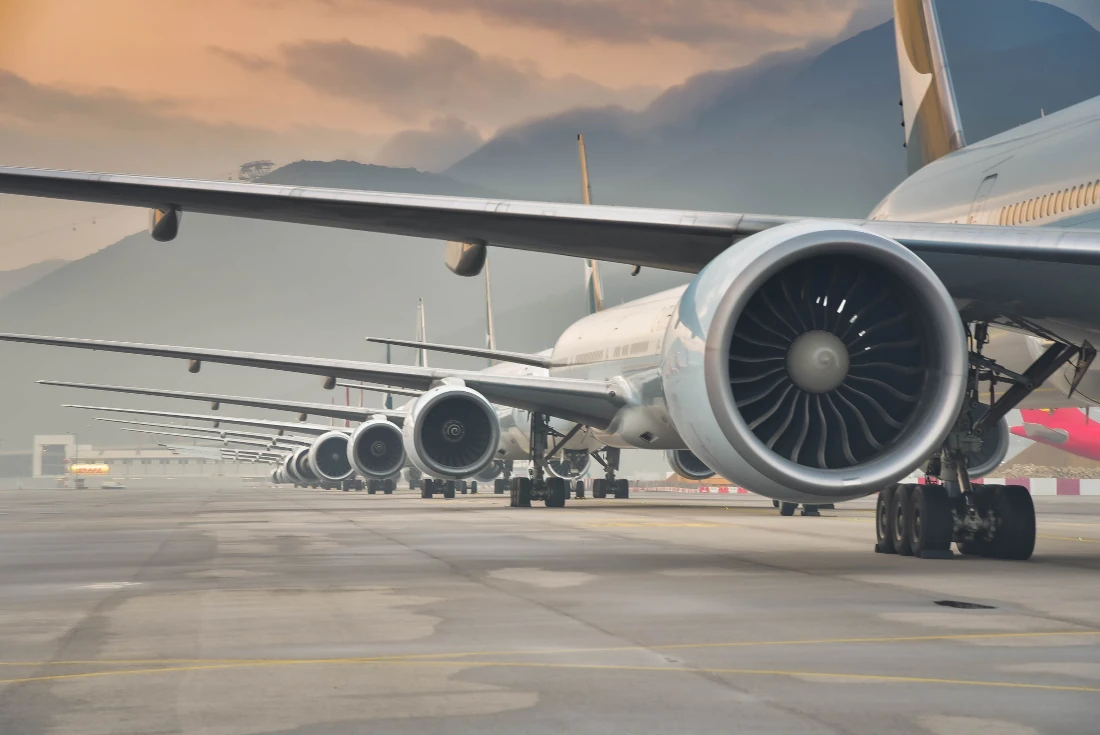
Metal Additive Manufacturing in Aerospace: Tech Taking Flight
The aerospace industry has always been a driving force for technological innovation. As we look to the future of flight, metal additive manufacturing (MAM) has emerged as a groundbreaking development, transforming the way we design, produce, and maintain aircraft components.
Join us while we delve into the impact of metal additive manufacturing on the aerospace industry, examining its benefits, challenges, and prominent use cases.
What is Metal Additive Manufacturing?
Metal additive manufacturing, also known as 3D metal printing, is a process that creates three-dimensional objects by adding layer upon layer of metal material. MAM employs a variety of techniques, including, but not limited to, powder bed fusion (PBF), directed energy deposition (DED), and binder jetting.
These technologies provide manufacturers with the ability to create complex geometries, lightweight structures, and customized components on demand.
Benefits of Additive Manufacturing for the Aerospace Industry
Metal AM offers effectiveness and efficiency, providing a solution for complex designs that were previously impossible to make. Beyond that, it also provides several benefits like reduced waste, cost-effectiveness, and a shorter manufacturing cycle. Let’s dive deeper into the benefits of additive manufacturing in aerospace and how it can make a significant contribution to the industry:
Design Freedom
With MAM, engineers can create sophisticated and intricate structures that would be unfeasible to make using traditional methods. This opportunity for design freedom allows the production of lightweight components with high optimization, resulting in improved fuel efficiency and reduced emissions.
Reduced Lead Times
Another benefit of MAM in the aerospace industry is reduced lead times. This rapid manufacturing process doesn't require multiple steps like casting, machining, and assembly. Because of this, production timelines accelerate, and manufacturers can quickly iterate and innovate.
Material Efficiency
Material efficiency is yet another benefit of MAM. It enables the production of components with minimal waste by using only the material that's necessary for the final product. Consequently, this reduces material consumption and overall production cost.
Customization
MAM also enables the customization of components tailored to fit specific applications. This benefit is particularly beneficial in the aerospace industry, where unique designs often are necessary to meet stringent performance and safety standards.
Challenges of MAM in Aerospace
Despite its many advantages, metal additive manufacturing also faces challenges that need to be addressed:
Certification
MAM components must adhere to strict aerospace certification standards. Regulatory bodies, such as the Federal Aviation Administration (FAA) and the European Aviation Safety Agency (EASA) are continuously working to develop guidelines and standards specific to additive manufacturing.
Cost
The initial cost of specialized additive manufacturing technology is still relatively expensive. Adding to the cost is the specialized training required to operate such machinery. However, working with a manufacturer with metal additive manufacturing technology already in place can offset these initial costs.
Prominent Use Cases of MAM in Aerospace
NASA’s Perseverance Rover
NASA’s Perseverance Rover, which touched down on Mars in February 2021, is an excellent example of how metal additive manufacturing is being used in space exploration. The rover incorporates several 3D-printed metal parts, which were chosen for their weight-saving capabilities, design freedom, and reduced production time.
One key component produced using MAM is the rover’s titanium Mars Oxygen In-Situ Resource Utilization Equipment (MOXIE) instrument. MOXIE’s primary function is to convert the carbon dioxide present in the Martian atmosphere into oxygen, a critical technology for future human missions to Mars.
The 3D-printed titanium housing for MOXIE enabled the creation of a highly intricate and lightweight structure and ensured the instrument’s durability in the extreme Martian environment.
Nasa’s Lunar Rover Project
Aerospace and defense company, Lockheed Martin, collaborated with MakerBot to develop a prototype lunar rover for NASA’s Artemis program. The Artemis program aims to land astronauts on the Moon by 2024, with a long-term goal of establishing a sustainable human presence on the lunar surface.
The partnership used MarkerBot’s METHOD X 3D printer to rapidly design, test, and iterate components for the lunar rover prototype. By leveraging the capabilities of additive technology, the team was able to quickly produce lightweight and durable parts, reduce development time, and minimize overall costs.
Wideband Global Satcom (WGS)
Aerospace company Boeing, embraced 3D printing technology to accelerate the production of the Wideband Global SATCOM (WGS) military satellite system. WGS is a high-capacity satellite communications network that provides essential communication services for the U.S. Department of Defense, the Australian Defense Force, and other international partners.
By using additive manufacturing, Boeing reduced the production time of critical components, such as brackets and waveguides, used in the WGS satellites. The 3D printed parts not only met the stringent requirements of satellite manufacturing but also contributed to weight reduction and streamlined assembly processes.
The Sky’s the Limit for Metal Additive Manufacturing
As you can see, metal additive manufacturing is changing the landscape of the aerospace industry by offering unprecedented design freedom, reduced lead times, and improved material efficiency. As the technology continues to mature, we can expect to see an increasing number of innovative applications and greater adoption of MAM in aerospace.
To learn more about metal additive manufacturing, check out our other resources.

